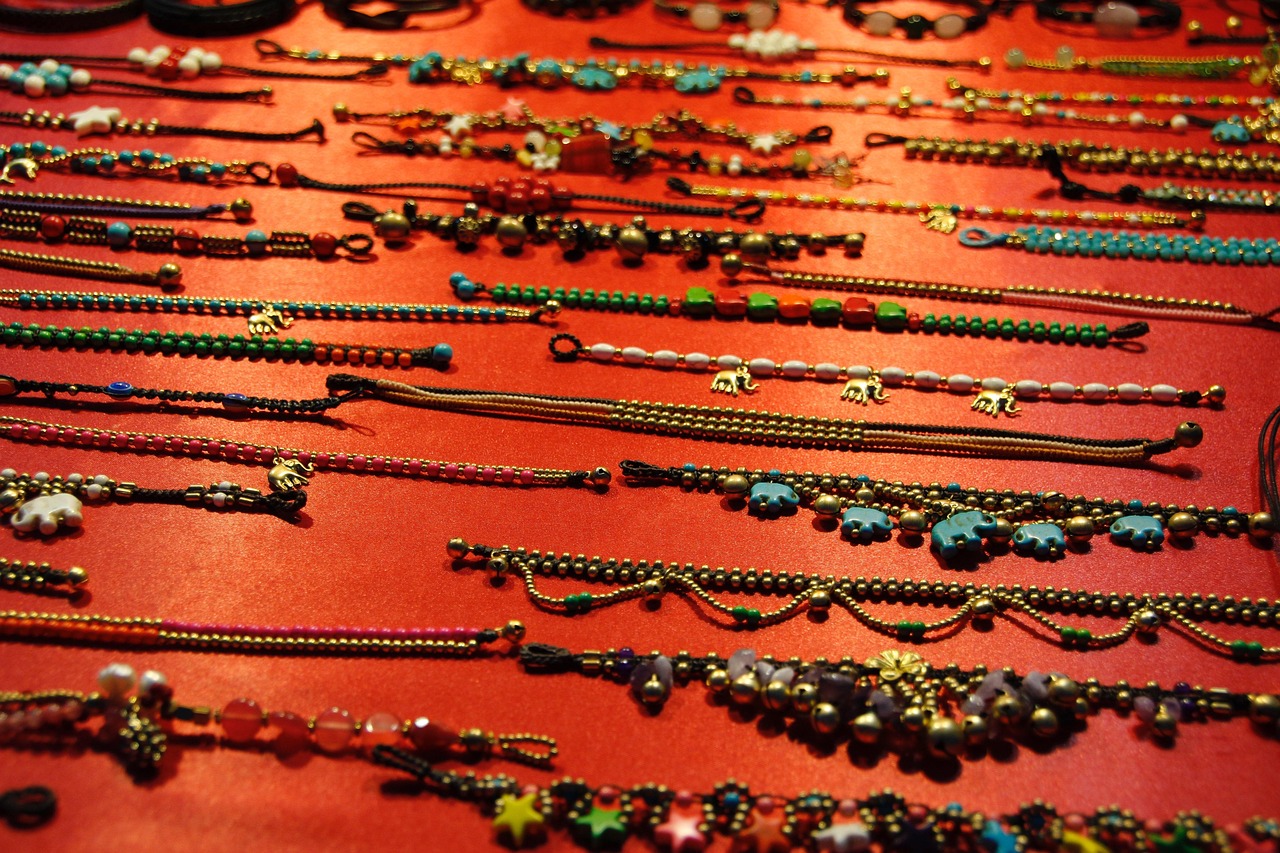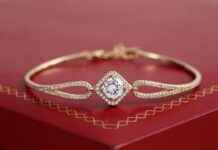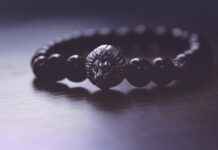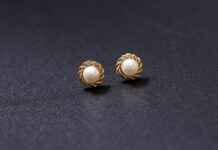This article explores the significance of anklets across various cultures, examining their historical context, symbolism, and contemporary relevance. Discover the diverse meanings and traditions associated with this unique accessory.
Historical Significance of Anklets
Anklets have a rich history, dating back to ancient civilizations. They were often worn by women of high social status and were symbols of wealth and elegance. In many cultures, the anklet served not just as a decorative piece but also as a mark of identity and belonging. For instance, in ancient Egypt, anklets were adorned with precious stones and metals, signifying the wearer’s status and connection to the divine.
Anklets in Indian Culture
In India, anklets, known as payal, hold profound cultural significance. They are traditionally associated with femininity and marital status. During weddings, brides often wear intricate anklets as part of their bridal attire, symbolizing love and commitment. Beyond ceremonies, many women wear them daily as a connection to their cultural roots.
Traditional Designs and Materials
Indian anklets come in a variety of designs and materials, each carrying unique meanings. From simple silver bands to elaborate gold pieces adorned with gemstones, these anklets reflect the rich craftsmanship of Indian artisans.
Gold and Silver Anklets
Gold and silver anklets are particularly popular, symbolizing wealth and purity. These materials are often chosen for their durability and aesthetic appeal, making them cherished heirlooms passed down through generations.
Gemstone-Adorned Anklets
Gemstone anklets are believed to possess specific energies and healing properties. Different stones, such as emeralds and rubies, are selected based on their significance in Indian culture, often linked to astrological beliefs.
Regional Variations in India
India’s diverse culture is reflected in its anklet styles. Each region boasts distinct designs and traditions, showcasing the country’s rich heritage. For example, the Kolhapuri anklet is known for its intricate patterns, while the Rajasthani anklet often features colorful beads.
Anklets in African Cultures
In various African cultures, anklets are symbols of status, protection, and beauty. They are often used to signify tribal affiliation and play an essential role in cultural rituals.
Symbolism of Beaded Anklets
Beaded anklets are prevalent in many African tribes, with specific bead patterns and colors representing different meanings. These anklets often tell stories of heritage and community.
Rituals and Ceremonies
Anklets are integral to many African rituals, marking rites of passage and celebrations. They are worn during significant life events, symbolizing transition and growth within the community.
Modern Interpretations of Anklets
Today, anklets have evolved beyond traditional meanings, becoming a fashionable accessory worldwide. They are embraced by various demographics, reflecting personal style and identity.
Fashion Trends and Styles
Anklets are available in diverse styles, from minimalist designs to bold, statement pieces. This variety allows individuals to express their unique fashion sense.
Celebrity Influence on Anklet Fashion
Public figures and celebrities often set trends in jewelry, including anklets. Their influence has played a significant role in popularizing this accessory, making it a must-have in contemporary fashion.
Conclusion
Anklets carry deep cultural significance across various societies, reflecting history, identity, and personal expression. Whether viewed as a symbol of tradition or a modern fashion statement, anklets continue to be a cherished accessory worldwide.
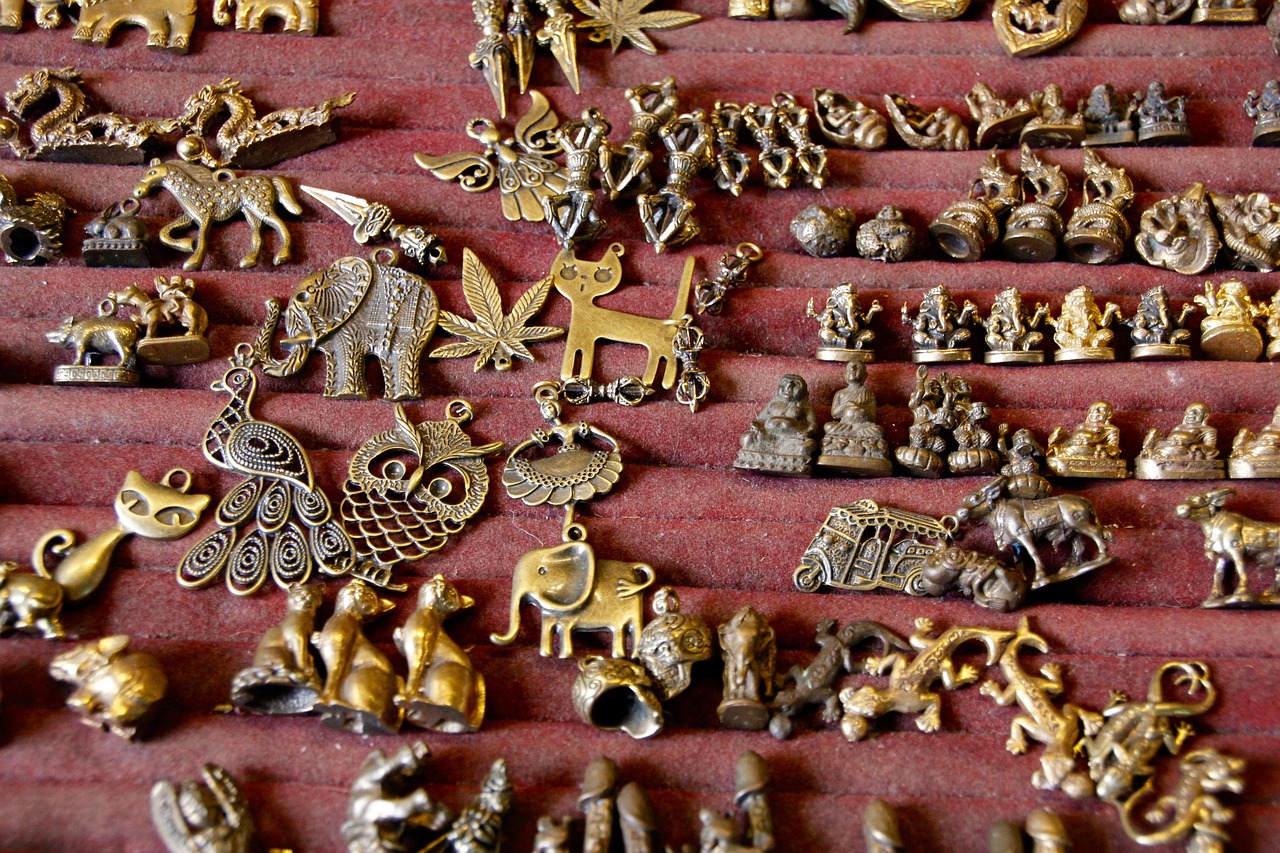
Historical Significance of Anklets
The Historical Significance of Anklets
Anklets have a rich and diverse history that spans across various cultures and civilizations. These ornamental pieces of jewelry, often worn around the ankle, have served multiple purposes throughout time, from symbolizing social status to expressing cultural identity. Their historical significance can be traced back thousands of years, where they were not merely accessories but held deep meanings and associations.
In ancient Egypt, anklets were worn by both men and women, signifying wealth and power. They were often made of precious metals and adorned with intricate designs. The elite would wear anklets to display their status, while common people might wear simpler versions. Similarly, in Mesopotamia, anklets were associated with deities and were often used in religious ceremonies.
Moving to the Indian subcontinent, anklets, known as payal, have been an integral part of traditional attire for centuries. In Indian culture, these ornaments symbolize femininity and marital status. They are often worn during weddings and special occasions and are believed to bring good fortune to the wearer. The jingling sound of anklets is considered auspicious and is thought to ward off evil spirits.
In African cultures, anklets carry significant meaning as well. They are often made from beads, metal, or leather and signify tribal affiliation, beauty, and protection. Many tribes use anklets in rituals and ceremonies, marking important life events such as births, marriages, and initiations.
Today, while anklets continue to hold cultural importance, they have also evolved into a fashion statement. Modern designs range from minimalist to elaborate, reflecting personal style and identity. Despite the changes in their use, the historical roots of anklets remind us of their enduring significance across cultures.

Anklets in Indian Culture
Anklets, known as payal in India, are more than just decorative accessories; they carry profound cultural significance and are deeply embedded in the fabric of Indian traditions. These beautiful ornaments are often associated with femininity and marital status, making them an essential part of a woman’s attire, particularly during significant life events.
The history of anklets in India can be traced back to ancient times, where they were worn by women of various social strata. Traditionally, they are made from materials such as gold, silver, and copper, each representing different aspects of wealth, purity, and cultural heritage. The sound of anklets jingling is often associated with grace and beauty, enhancing the elegance of the wearer.
In Indian culture, anklets are integral to various ceremonies, including weddings and festivals. During weddings, brides often wear ornate anklets adorned with gemstones, which are believed to bring good fortune and prosperity. The presence of anklets during such occasions symbolizes the transition into a new phase of life, marking the significance of marriage.
Traditional Designs and Materials
- Gold and Silver Anklets: Gold anklets are a sign of wealth and are often preferred for their durability and shine. Silver anklets, on the other hand, are believed to have healing properties and are favored for daily wear.
- Gemstone-Adorned Anklets: These anklets are crafted using various stones, each carrying unique energies. For instance, emeralds are thought to enhance wisdom, while rubies are associated with love and passion.
Regional Variations in India
India’s diverse culture is reflected in its anklet designs. Each region boasts its unique styles, influenced by local traditions and customs. For example, in the southern states, anklets are often heavier and more intricate, while northern designs may be more delicate and minimalist.
In conclusion, anklets hold a significant place in Indian culture, symbolizing not only beauty and grace but also the rich traditions that define the Indian way of life. As fashion continues to evolve, these timeless ornaments remain a cherished part of women’s adornment, bridging the gap between tradition and modernity.
payal,
The Meaning Behind Wearing Anklets in Different Cultures
This article explores the significance of anklets across various cultures, examining their historical context, symbolism, and contemporary relevance. Discover the diverse meanings and traditions associated with this unique accessory.
Historical Significance of Anklets
Anklets have been worn for centuries, often linked to social status and cultural identity. This section delves into the historical roots of anklet usage across different civilizations.
Anklets in Indian Culture
In India, anklets, or payal, hold deep cultural significance, often symbolizing femininity and marital status. This section discusses their role in traditional ceremonies and everyday life.
Traditional Designs and Materials
Indian anklets come in various designs and materials, each with its own meaning. Here, we explore the craftsmanship and cultural symbolism behind these adornments.
Gold and Silver Anklets
Gold and silver are the most popular materials for Indian anklets, each representing wealth and purity. This subsection discusses their importance in Indian traditions.
Gemstone-Adorned Anklets
Gemstone anklets are believed to carry specific energies. This section examines the significance of different stones used in anklet designs in Indian culture.
Regional Variations in India
Different regions in India have unique anklet styles and traditions. This section highlights how cultural diversity influences anklet designs and meanings.
Anklets in African Cultures
In various African cultures, anklets serve as symbols of status, protection, and beauty. This section explores their significance in different tribes and communities.
Symbolism of Beaded Anklets
Beaded anklets are common in many African cultures, often representing tribal affiliation. This subsection discusses the meanings behind specific bead patterns and colors.
Rituals and Ceremonies
Anklets play a crucial role in many African rituals and ceremonies. This section examines how they are used in rites of passage and celebrations.
Modern Interpretations of Anklets
Today, anklets have transcended their traditional meanings, becoming a fashion statement. This section discusses how contemporary culture has redefined the significance of anklets.
Fashion Trends and Styles
Anklets are now available in various styles, from minimalist to elaborate designs. This subsection explores current fashion trends and how they reflect personal identity.
Celebrity Influence on Anklet Fashion
Celebrities often set trends in jewelry, including anklets. This section examines how public figures influence the popularity and styles of anklets in modern fashion.
hold deep cultural significance, often symbolizing femininity and marital status. This section discusses their role in traditional ceremonies and everyday life.
The Meaning Behind Wearing Anklets in Different Cultures
This article explores the significance of anklets across various cultures, examining their historical context, symbolism, and contemporary relevance. Discover the diverse meanings and traditions associated with this unique accessory.
Historical Significance of Anklets
Anklets have been worn for centuries, often linked to social status and cultural identity. This section delves into the historical roots of anklet usage across different civilizations.
Anklets in Indian Culture
In India, anklets, or payal, hold deep cultural significance, often symbolizing femininity and marital status. This section discusses their role in traditional ceremonies and everyday life.
- Traditional Designs and Materials
- Indian anklets come in various designs and materials, each with its own meaning. Here, we explore the craftsmanship and cultural symbolism behind these adornments.
- Gold and Silver Anklets
Gold and silver are the most popular materials for Indian anklets, each representing wealth and purity. This subsection discusses their importance in Indian traditions.
- Gemstone-Adorned Anklets
Gemstone anklets are believed to carry specific energies. This section examines the significance of different stones used in anklet designs in Indian culture.
- Regional Variations in India
Different regions in India have unique anklet styles and traditions. This section highlights how cultural diversity influences anklet designs and meanings.
Anklets in African Cultures
In various African cultures, anklets serve as symbols of status, protection, and beauty. This section explores their significance in different tribes and communities.
- Symbolism of Beaded Anklets
Beaded anklets are common in many African cultures, often representing tribal affiliation. This subsection discusses the meanings behind specific bead patterns and colors.
- Rituals and Ceremonies
Anklets play a crucial role in many African rituals and ceremonies. This section examines how they are used in rites of passage and celebrations.
Modern Interpretations of Anklets
Today, anklets have transcended their traditional meanings, becoming a fashion statement. This section discusses how contemporary culture has redefined the significance of anklets.
- Fashion Trends and Styles
Anklets are now available in various styles, from minimalist to elaborate designs. This subsection explores current fashion trends and how they reflect personal identity.
- Celebrity Influence on Anklet Fashion
Celebrities often set trends in jewelry, including anklets. This section examines how public figures influence the popularity and styles of anklets in modern fashion.
Traditional Designs and Materials
In India, anklets, known as payal, are not just adornments but a reflection of rich cultural heritage. These beautiful pieces come in a variety of designs and are made from different materials, each carrying its own symbolism and meaning.
Craftsmanship is at the heart of Indian anklet making. Artisans use intricate techniques passed down through generations to create unique designs. The craftsmanship varies by region, showcasing local traditions and styles that contribute to the diversity of anklets in India.
| Material | Symbolism |
|---|---|
| Gold | Represents wealth and prosperity, often worn during weddings and festivals. |
| Silver | Symbolizes purity and is believed to have protective properties. |
| Gemstones | Each gemstone is associated with specific energies and healing properties. |
Among the most popular materials, gold and silver anklets hold a special place in Indian culture. Gold anklets are often adorned with intricate designs and are considered auspicious, especially during religious ceremonies. Silver anklets, on the other hand, are commonly worn daily, symbolizing simplicity and grace.
Furthermore, anklets embellished with gemstones are believed to enhance the wearer’s well-being. Each stone, such as emerald, ruby, or diamond, carries its own significance, often linked to astrological beliefs in Indian culture.
In conclusion, the traditional designs and materials of Indian anklets are deeply rooted in cultural symbolism. From the choice of metal to the incorporation of gemstones, each element tells a story that reflects the rich tapestry of Indian heritage. Whether worn for special occasions or daily use, anklets continue to be a cherished part of Indian identity.
Gold and Silver Anklets
hold a special place in the rich tapestry of Indian culture, representing not just adornment, but also deep-rooted traditions and values. These precious metals are often associated with wealth, purity, and prosperity, making them a favored choice for anklet designs.
In Indian society, anklets, known as payal, are more than mere accessories; they are symbols of femininity and marital status. Traditionally, married women wear these anklets as a sign of their commitment and status within the family. The soft jingling sound they produce is often thought to ward off evil spirits, adding a layer of protection to the wearer.
Gold anklets, in particular, are considered auspicious and are often gifted during weddings and festivals. They embody the wealth of the family and are passed down through generations as heirlooms. Silver anklets, on the other hand, are favored for their purity and healing properties. Silver is believed to have a calming effect, promoting emotional balance and tranquility.
| Material | Symbolism | Common Uses |
|---|---|---|
| Gold | Wealth, Prosperity | Weddings, Festivals |
| Silver | Purity, Healing | Everyday Wear, Rituals |
Moreover, the craftsmanship involved in creating gold and silver anklets showcases the artistry and skills of Indian artisans. Intricate designs often feature traditional motifs, which hold cultural significance and tell stories of heritage and history. Each piece is not just a fashion statement but a representation of the wearer’s identity and background.
In conclusion, gold and silver anklets are not merely decorative items; they are imbued with cultural significance and personal meaning. Their presence in Indian traditions highlights the importance of family, identity, and the continuity of cultural practices. As such, they remain a cherished part of Indian heritage.
Gemstone-Adorned Anklets
hold a special place in Indian culture, not only as beautiful accessories but also as symbols of spiritual significance. Each gemstone is believed to emit specific energies that can influence the wearer’s life in various ways. This section delves into the meanings and cultural importance of different stones commonly used in anklet designs.
| Gemstone | Meaning | Energy Properties |
|---|---|---|
| Ruby | Passion and Courage | Enhances vitality and motivation |
| Emerald | Love and Harmony | Promotes emotional balance and healing |
| Sapphire | Wisdom and Protection | Encourages self-discipline and intuition |
| Amethyst | Spiritual Growth | Supports meditation and calmness |
| Topaz | Joy and Generosity | Increases confidence and creativity |
In Indian tradition, wearing anklets adorned with these gemstones is believed to attract positive energies and ward off negativity. For instance, ruby is associated with passion and is often worn by individuals seeking to enhance their motivation and vitality. Similarly, emerald is revered for its ability to foster emotional balance and harmony in relationships.
Moreover, these anklets are not merely decorative; they also serve as a reminder of the spiritual journey one undertakes. Many women wear these anklets during significant life events, such as weddings or religious ceremonies, to invoke the protective energies of the gemstones. This practice highlights the deep-rooted belief in the connection between physical adornments and spiritual well-being.
In conclusion, gemstone-adorned anklets are more than just traditional jewelry in India; they embody a rich tapestry of cultural significance, spiritual beliefs, and personal expression. By understanding the meanings behind each stone, wearers can choose anklets that resonate with their individual journeys and aspirations.
Regional Variations in India
India is a land of diverse cultures and traditions, and this diversity is beautifully reflected in the various styles of anklets, known as payal. Each region boasts its own unique designs, materials, and meanings, showcasing the rich tapestry of Indian heritage. Understanding these variations provides insight into how cultural practices shape the significance of anklets.
- North India: In states like Punjab and Haryana, anklets are often crafted from silver and adorned with intricate designs. They symbolize marital status and are commonly worn during weddings and festivals.
- West India: The Kutch region in Gujarat is famous for its colorful and embellished anklets, often featuring mirror work and beads. These anklets reflect the vibrant culture of the area and are worn by women during traditional dances.
- South India: In Tamil Nadu, anklets are traditionally made of gold and often incorporate tiny bells that produce melodious sounds when the wearer walks. This is believed to ward off evil spirits and bring good luck.
- East India: In West Bengal, anklets are often crafted from brass and feature designs inspired by nature. They are an integral part of a bride’s attire, symbolizing beauty and grace.
- Central India: In regions like Madhya Pradesh, tribal women wear anklets made from natural materials such as wood and clay, reflecting their connection to nature and the environment.
These regional variations highlight how cultural diversity influences not only the designs of anklets but also their meanings and significance in everyday life. Each pair of anklets tells a story of tradition, identity, and the unique heritage of its wearer, making them more than just a piece of jewelry.
Anklets in African Cultures
In various African cultures, anklets hold profound significance, serving as vital symbols of status, protection, and beauty. Across the continent, different tribes and communities have unique traditions and meanings associated with these ornamental pieces.
Historically, anklets have been worn by both men and women, often indicating social hierarchy and cultural identity. For example, in some regions, the number of anklets worn can signify a person’s rank within the community. In contrast, among certain tribes, specific designs or materials used in anklets can reflect one’s tribal affiliation or marital status.
- Symbolism of Beaded Anklets: Beaded anklets are particularly common in many African cultures. The patterns and colors of the beads often carry specific meanings, representing various attributes such as fertility, protection, and connection to ancestral spirits. For instance, red beads may symbolize strength, while blue beads can represent tranquility.
- Rituals and Ceremonies: Anklets play a pivotal role in numerous African rituals and ceremonies. During rites of passage, such as initiations or weddings, anklets are often worn to signify the transition of individuals into new stages of life. They are also frequently used in dance performances, where the sound of the anklets enhances the cultural significance of the event.
Moreover, the craftsmanship involved in creating anklets often reflects the artistic heritage of a community. Many artisans use traditional techniques passed down through generations, ensuring that each piece is not only beautiful but also rich in cultural meaning.
In conclusion, anklets in African cultures are more than mere accessories; they are deeply embedded in the social fabric of various communities. They symbolize identity, tradition, and continuity, making them an essential aspect of cultural expression across the continent.
Symbolism of Beaded Anklets
Beaded anklets hold significant cultural meaning in various African societies, serving as more than just decorative accessories. These anklets often symbolize tribal affiliation, social status, and personal identity. The intricate bead patterns and vibrant colors used in these anklets convey messages about the wearer’s heritage, beliefs, and community ties.
Each bead used in the anklet can represent different aspects of the wearer’s life and culture. For instance, red beads may symbolize strength and courage, while blue beads often signify peace and harmony. Additionally, green beads can represent fertility and growth, reflecting the connection to the earth and nature. This rich tapestry of meanings allows individuals to express their unique identities and cultural backgrounds through their jewelry.
| Color | Symbolism |
|---|---|
| Red | Strength and Courage |
| Blue | Peace and Harmony |
| Green | Fertility and Growth |
| Yellow | Joy and Prosperity |
Furthermore, the patterns formed by the beads can also indicate specific tribal affiliations. For example, certain motifs are unique to particular tribes, allowing members to visually identify themselves and others within their community. This aspect of beaded anklets not only reinforces communal bonds but also fosters a sense of pride in one’s cultural heritage.
In summary, beaded anklets are rich in symbolism and meaning, serving as a powerful expression of identity and belonging in many African cultures. The colors and patterns not only enhance the beauty of the anklet but also tell a story about the wearer’s life, values, and connections to their community.
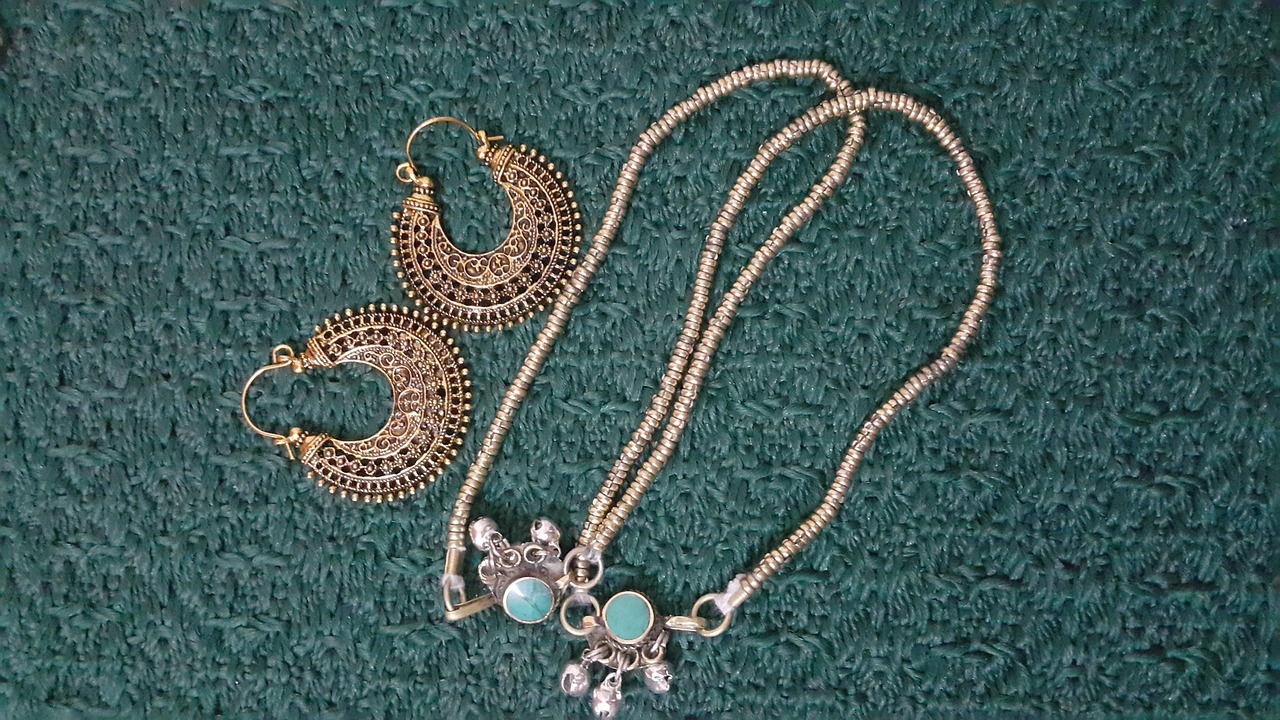
Rituals and Ceremonies
Anklets hold significant cultural importance in many African societies, particularly during rituals and ceremonies. These decorative pieces are not merely fashion accessories; they are imbued with deep meanings that resonate with the values and traditions of various communities.
In numerous African cultures, anklets serve as symbols of status and identity. For example, during rites of passage such as initiation ceremonies, anklets are often worn to signify the transition from one stage of life to another. They may be crafted from specific materials that hold cultural significance, such as beads or metal, each representing different aspects of the wearer’s heritage.
Moreover, anklets are frequently used in celebrations such as weddings and festivals. In these contexts, they are adorned with intricate designs that reflect the community’s artistic traditions. The sound of anklets jingling as one dances is believed to bring good fortune and blessings, making them an essential part of festive attire.
Different tribes have unique practices surrounding anklets. For instance, the Maasai people of Kenya often wear colorful beaded anklets that indicate their social status within the tribe. Similarly, in West African cultures, anklets may be used to ward off evil spirits, with specific designs believed to offer protection.
In conclusion, anklets are far more than decorative items in African cultures; they are vital components of rituals and ceremonies, serving as powerful symbols of identity, status, and community values. Understanding their significance allows for a deeper appreciation of the rich cultural tapestry that these adornments represent.
Modern Interpretations of Anklets
In contemporary society, anklets have evolved significantly from their traditional roles, becoming prominent fashion accessories that reflect personal style and identity. This transformation showcases how jewelry can transcend its original meanings and adapt to modern aesthetics.
Initially, anklets were primarily associated with cultural and social significance, often symbolizing marital status or cultural heritage. However, in today’s fashion landscape, they have become versatile pieces that cater to various tastes and preferences. Fashion designers and brands have embraced anklets, introducing a plethora of styles ranging from delicate chains to bold, statement pieces.
- Minimalist Designs: Simple, understated anklets are popular among those who prefer a more subtle approach to accessorizing. These often feature thin chains with small charms or beads.
- Bohemian Styles: Inspired by free-spirited aesthetics, bohemian anklets often incorporate natural materials, vibrant colors, and intricate patterns, appealing to a more eclectic audience.
- Statement Anklets: For those who wish to make a bold impression, oversized anklets adorned with gemstones or unique designs serve as eye-catching accessories.
The influence of celebrities and social media has played a crucial role in popularizing anklets in modern fashion. Public figures often showcase their personal styles, leading to increased visibility and demand for anklet designs. Platforms like Instagram and TikTok have further amplified this trend, allowing users to share styling tips and inspire others to incorporate anklets into their wardrobes.
In conclusion, the modern interpretation of anklets illustrates a fascinating shift from traditional symbolism to contemporary fashion statements. As they continue to evolve, anklets not only enhance personal style but also serve as a reminder of the rich cultural heritage associated with this timeless accessory.
Fashion Trends and Styles
Anklets have evolved significantly in recent years, emerging as a popular fashion accessory that transcends cultural boundaries. From minimalist designs to elaborate styles, anklets now cater to a wide range of personal tastes and fashion statements. This section delves into the latest trends in anklet fashion and how they serve as a reflection of individual identity.
One of the most notable trends is the rise of layered anklets. Fashion enthusiasts are embracing the idea of stacking multiple anklets in varying lengths and styles, creating a unique and personalized look. This layering technique allows individuals to mix and match different materials, such as beaded, metallic, and fabric anklets, showcasing their creativity and personal flair.
Another trend gaining traction is the use of natural materials. Many designers are incorporating elements like wood, shells, and stones into anklet designs. These organic materials not only add a touch of nature but also resonate with the growing movement towards sustainability in fashion. Consumers are increasingly drawn to products that reflect their values, making eco-friendly anklets a popular choice.
The influence of bohemian style is also evident in current anklet trends. Bohemian anklets often feature intricate designs, vibrant colors, and charms that tell a story. This style appeals to those who wish to express their free-spirited nature and connection to the earth. Additionally, the beachy vibe of anklets adorned with shells and beads is perfect for summer fashion, making them a staple in warm-weather wardrobes.
As we observe these trends, it becomes clear that anklets have transcended their traditional roles. They now serve as a canvas for self-expression, allowing individuals to showcase their unique personalities. Whether worn casually or as part of a more formal outfit, anklets have become a versatile accessory that reflects the wearer’s identity and style.
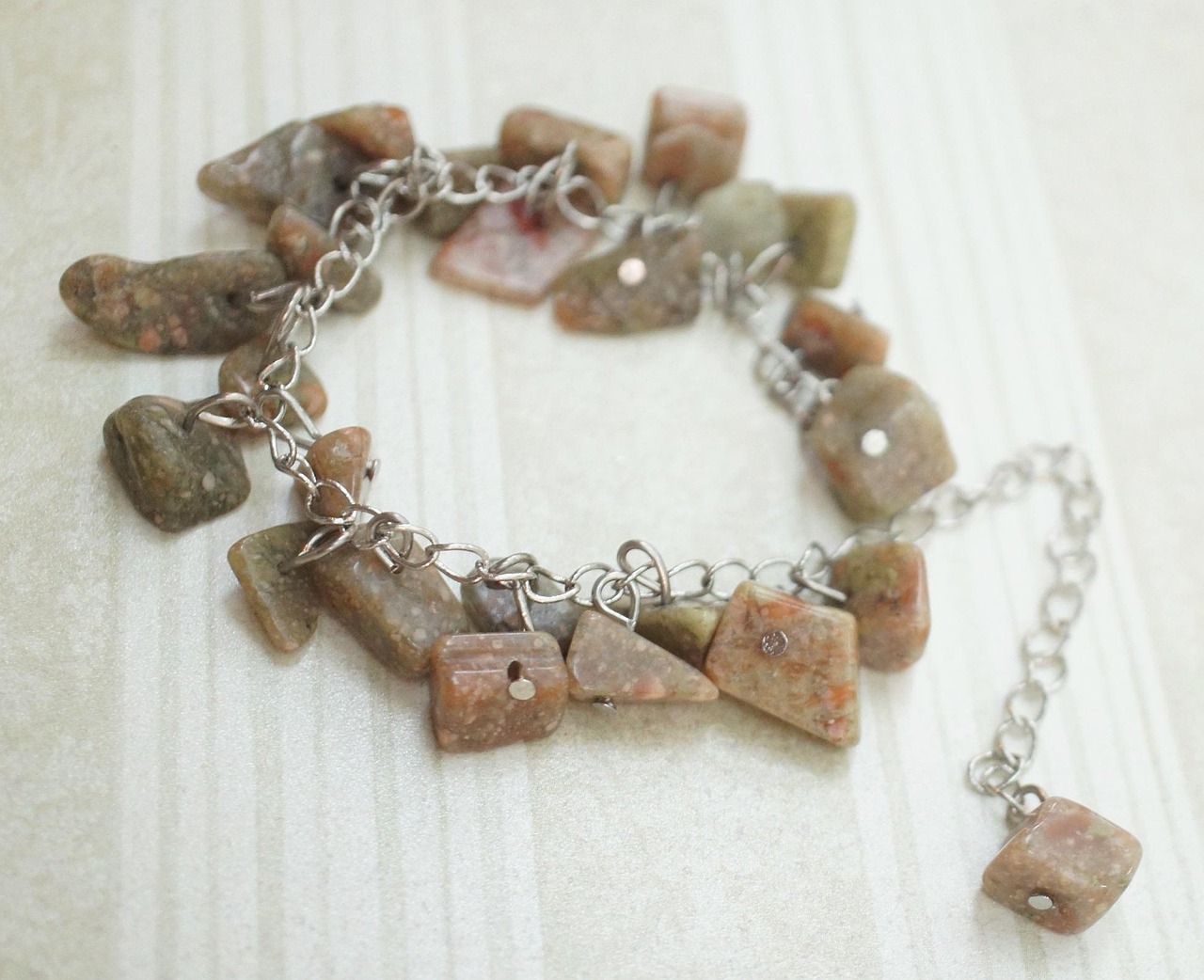
Celebrity Influence on Anklet Fashion
In recent years, anklets have surged in popularity, largely due to the influence of celebrities. Public figures, from musicians to actors, have embraced anklets as a fashionable accessory, showcasing their unique styles and personal expressions. This trend has not only elevated the status of anklets in the fashion world but has also redefined how they are perceived by the general public.
One of the key reasons behind this influence is the visibility that celebrities bring to various fashion items. When a well-known figure is spotted wearing an anklet, it often leads to a ripple effect, prompting fans and fashion enthusiasts to adopt similar styles. For example, when a popular singer was seen wearing a delicate gold anklet during a high-profile event, it quickly became a sought-after item among her followers.
Furthermore, social media platforms play a crucial role in amplifying this trend. Celebrities frequently share their fashion choices on platforms like Instagram and TikTok, where anklets are showcased in creative ways. This exposure not only highlights different styles but also encourages followers to experiment with their own looks. As a result, anklets are now available in a myriad of designs, materials, and colors, catering to diverse tastes.
Moreover, the symbolism associated with anklets has evolved. While traditionally linked to cultural significance, modern interpretations often focus on personal style and self-expression. Celebrities have embraced this shift, using anklets to make bold fashion statements that resonate with their audiences.
In conclusion, the influence of celebrities on anklet fashion is undeniable. Their ability to set trends and inspire change in the fashion landscape has transformed anklets from a traditional accessory into a modern must-have. As we continue to see celebrities donning these stylish pieces, it is clear that anklets are here to stay, captivating the hearts of fashion lovers everywhere.
Frequently Asked Questions
- What do anklets symbolize in different cultures?
Anklets carry various meanings across cultures. In Indian culture, they often symbolize femininity and marital status, while in African cultures, they can represent status and tribal affiliation. Each design and material can also have its own unique significance.
- Are there specific materials used for anklets?
Yes! In India, gold and silver are popular choices, symbolizing wealth and purity. Additionally, gemstone-adorned anklets are believed to carry specific energies, enhancing their cultural importance.
- How have anklets evolved in modern fashion?
Today, anklets have transitioned from traditional symbols to trendy fashion statements. They come in various styles, from minimalist to elaborate designs, allowing individuals to express their personal identity through this unique accessory.
- Do celebrities influence anklet trends?
Absolutely! Celebrities play a significant role in popularizing anklet styles. Their choices often set trends, making anklets a must-have accessory in contemporary fashion.
- What are the traditional designs of anklets in India?
Indian anklets feature a variety of designs, often showcasing intricate craftsmanship. Common styles include beaded, chain, and gemstone-encrusted anklets, each reflecting the rich cultural heritage of different regions.

